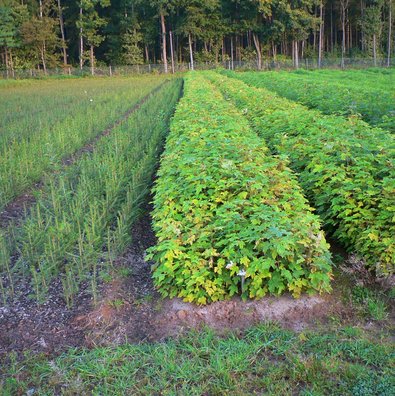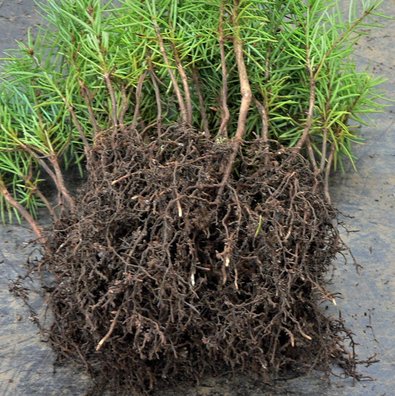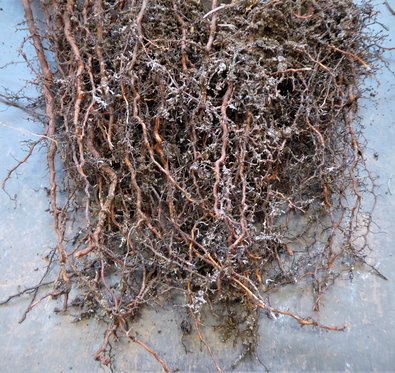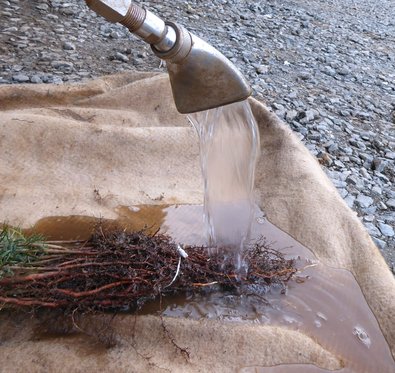Why protect the roots?
With deteriorating conditions for forest management, it is going to become even more important in forestry in future to select high quality, vigorous young trees and to make sure they are planted in the soil professionally and properly. One way of preserving the vitality of the plants and thus helping to ensure the success of the cultivation measure is to treat the roots with alginates to protect them. This is a very simple, low-cost measure, but it has a long-term positive effect if carried out professionally and properly.
Root protection with alginates has been recommended since as early as the late 1960s. With "Agricol", the product available at that time, tree nurseries and the forestry industry had a product at their disposal that could prevent the sensitive roots from drying out. Root hairs are particularly sensitive and show the first signs of dieback after less than a minute of direct exposure to the sun and wind. It is therefore important to ensure the roots are always covered and to protect them from drying out. For the unavoidable period of exposure of roots during transportation and loading, the additional protection of a thin alginate film over the roots can help preserve the freshness of the plant significantly. This protective film continues to help the plant even after it has been planted in the soil.
The "planting shock" ...
The structure of the forest soil is disturbed when planting holes are prepared or created in the course of cultivation activities. Capillary rise of ground water is not possible, and the young, freshly planted root has not yet taken root in the soil. The plant thus cannot immediately take in water from the soil. The internal water balance of the bare rooted plant is disturbed - and it slowly dries out. This results in a reduction in functionality, and in extreme cases, in the death of the plant.
... and the "protective gel"
Woody plants have a water content of 50 to 85 %. Appropriate measures and procedures must be applied to minimise the water deficit from when the plant is dug out to replanting. It is important that every possible measure is taken during transportation to ensure that neither sun nor wind cause stress or damage to the plants. The most sensitive parts of the plant are however the root hairs. Here it is essential to limit the loss of water or compensate for transpiration loss - for example by applying a sort of protective gel.
What are alginates?
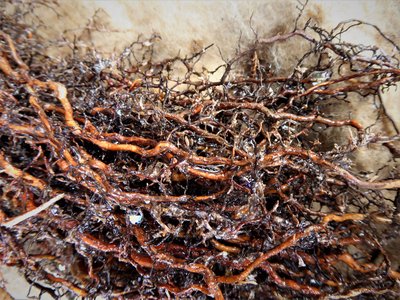
Fig. 3: Root hairs after being doused in a protective alginate gel. The root protection agent coats the root hairs, thereby protecting them from drying out, and stores water for absorption by the plant. The coating and resulting film is clearly visible between the roots (Picture: Ottmar Ruppert, LWF).
The basic idea of protective dipping is to store as much water as possible in and around the root system and to minimise the drying stress for the root in order to prevent permanent damage to the plant. Alginates can do this very well. In doing so they do not cause any damage to the plants or problems during processing and handling, and they leave no residue in the soil. Attention should be paid to the product-specific safety instructions during the application. Alginates are natural colloidal substances derived from brown marine algae. In chemical terms, they are the salts of alginic acid, which is also the basic component of humic acid colloids in soil. They are soluble in water and can under certain conditions bind large amounts of water.
Application
To ensure the root protection agent has the desired effect from the beginning, the root should be treated in the nursery after sorting and bundling of the plants, and before delivery. The procedure can if necessary be repeated on site after delivery. There are currently two products free of super-absorbent polymers available on the market. When it comes to the application, there are essentially two possible procedures, which do not differ in effect. What is important is the correct dosage - not too low - of the agent, as described in the manufacturer’s instructions on the packaging. With the application of alginates there is no need for an official certificate or proof of competence in the application of pesticides.
- Dipping: Here the roots of the plant bundle are dipped in the prepared root protection solution, until all roots are sufficiently coated. Then the plant bundle is loaded for transport or temporarily stored.
- Dousing: In the dousing procedure, a low-pressure hose is used to pour the root protection agent over the plant bundle. The low pressure is important, so that any existing soil matter around the roots is not washed out.
Super-absorbent polymers and their environmental impact
There is currently a tendency on the market towards the use of so-called super-absorbent polymers, usually potassium polyacrylates - as an additive to help retain water in crop establishment, also in the forest. Polyacrylates are micro-plastics that are supposed to improve the water balance of the soil and thus the water supply of forest plants. As it has not yet been conclusively shown what effect they have on forest plants and how these substances behave in the forest soil, or which degradation processes occur and what effects these have on soil life, their use is not currently recommended. The use of these products is thus not eligible for funding support measures. The same is true for mixtures of alginates with polyacrylates. The "biological degradability" mentioned by the manufacturers cannot as yet be guaranteed for the circumstances and conditions existing in the forest.
Funding possibilities
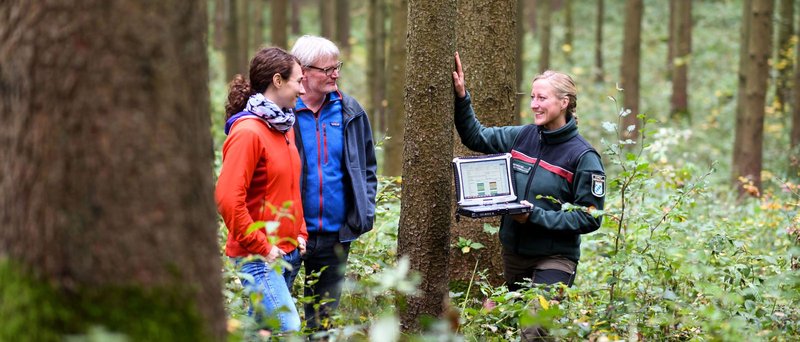
Fig. 6: The foresters of the Bavarian Forestry Administration will be delighted to provide practical help and advice (Picture: Tobias Hase, StMELF).
In order to provide for the future, it is important to ensure the establishment of productive, climate-tolerant mixed forests that are suitable for the site. The Bavarian State Forestry Administration thus provides support to forest owners for forest planting and sowing activities. Under the WALDFÖPR forestry support programme (status as of 2020), there is support available for measures that protect the roots from evaporation. Super-absorbers are however excluded from this funding.

